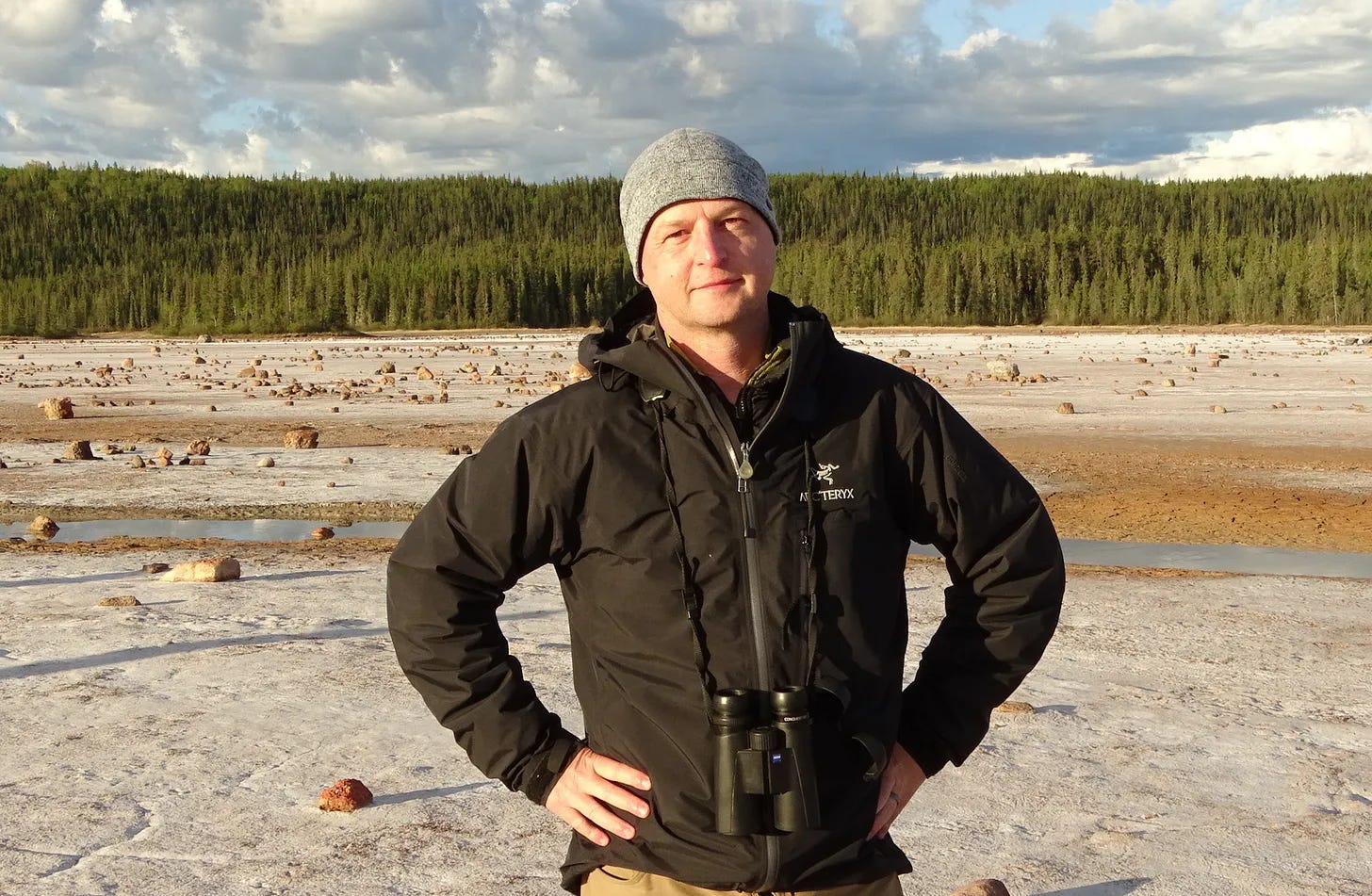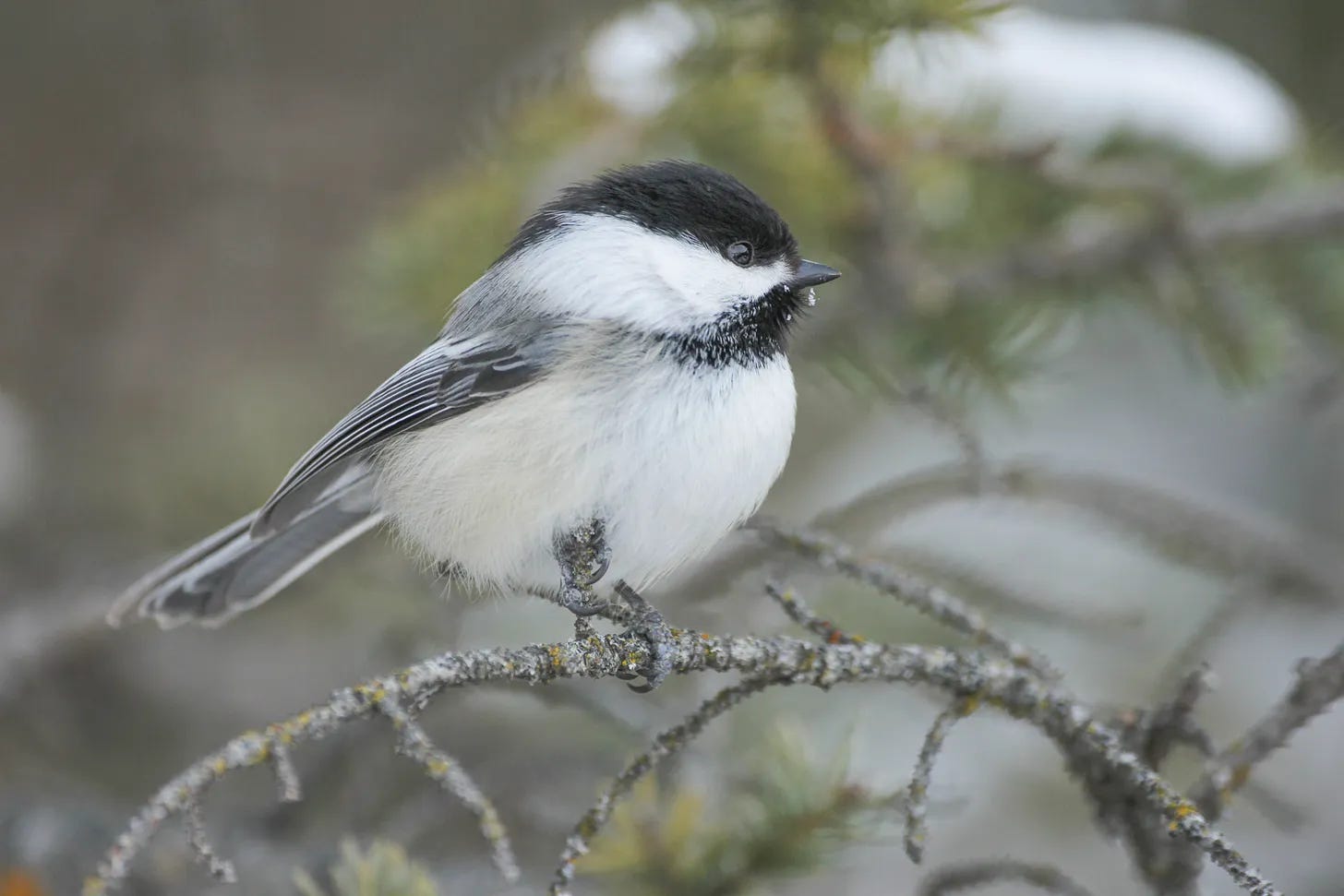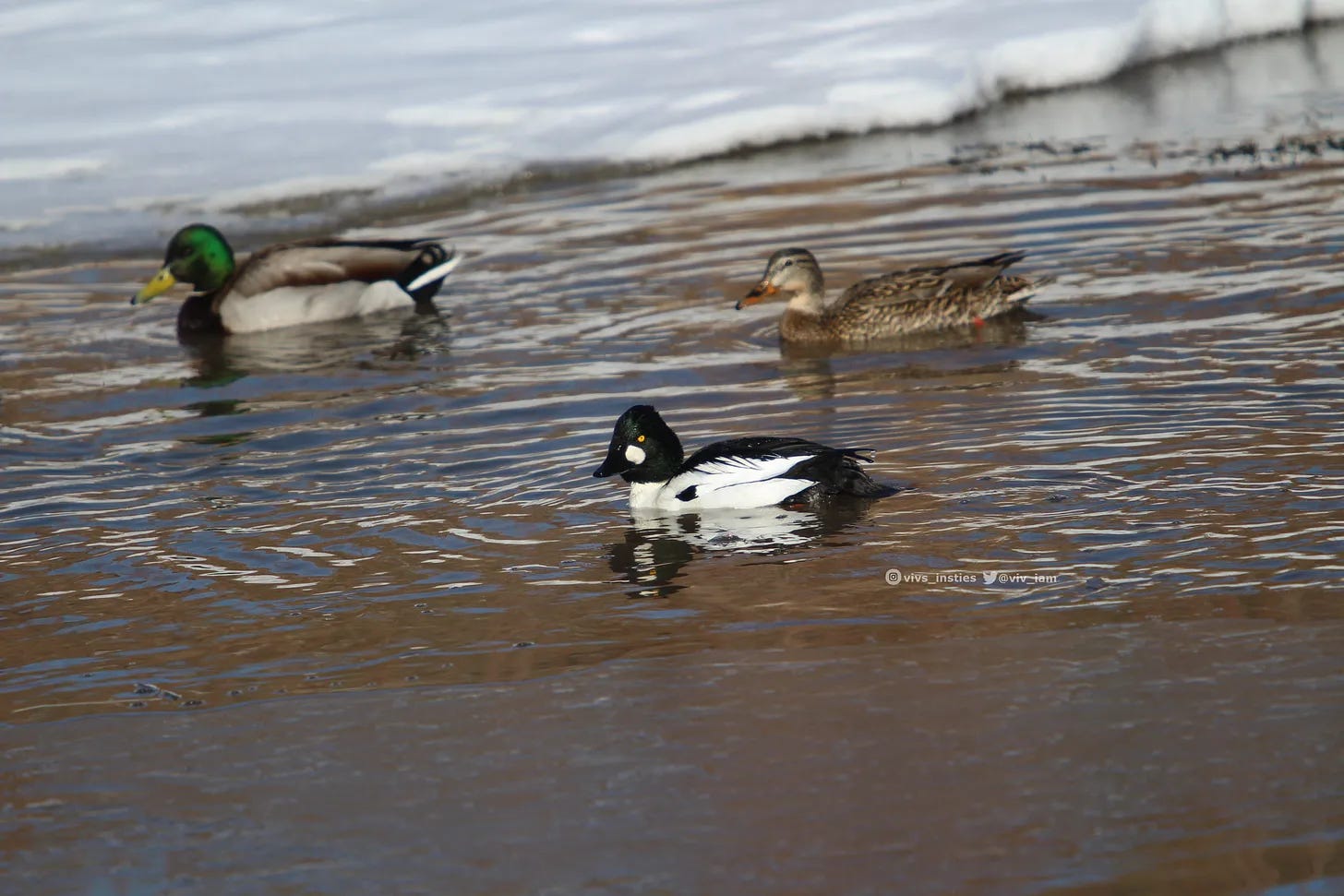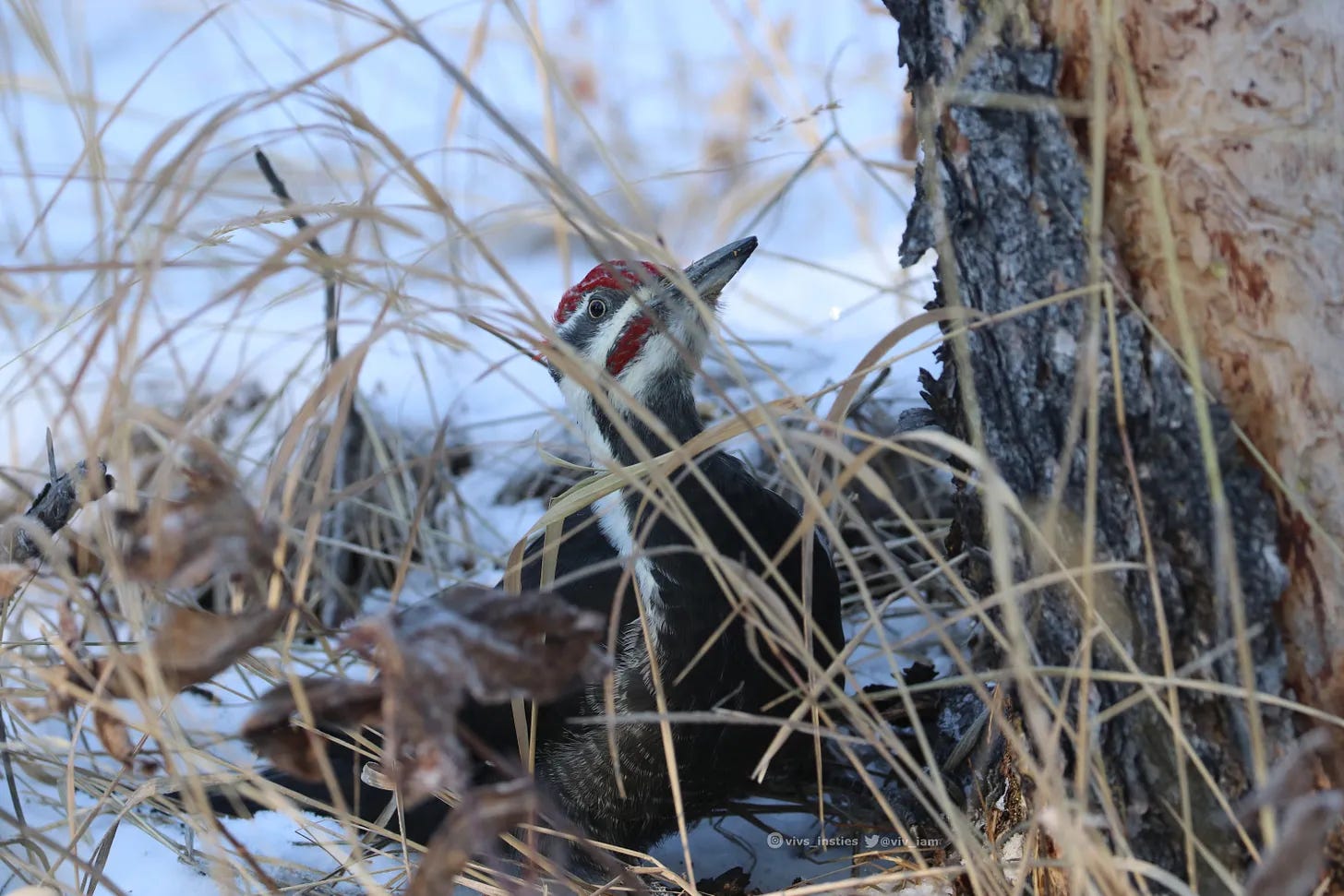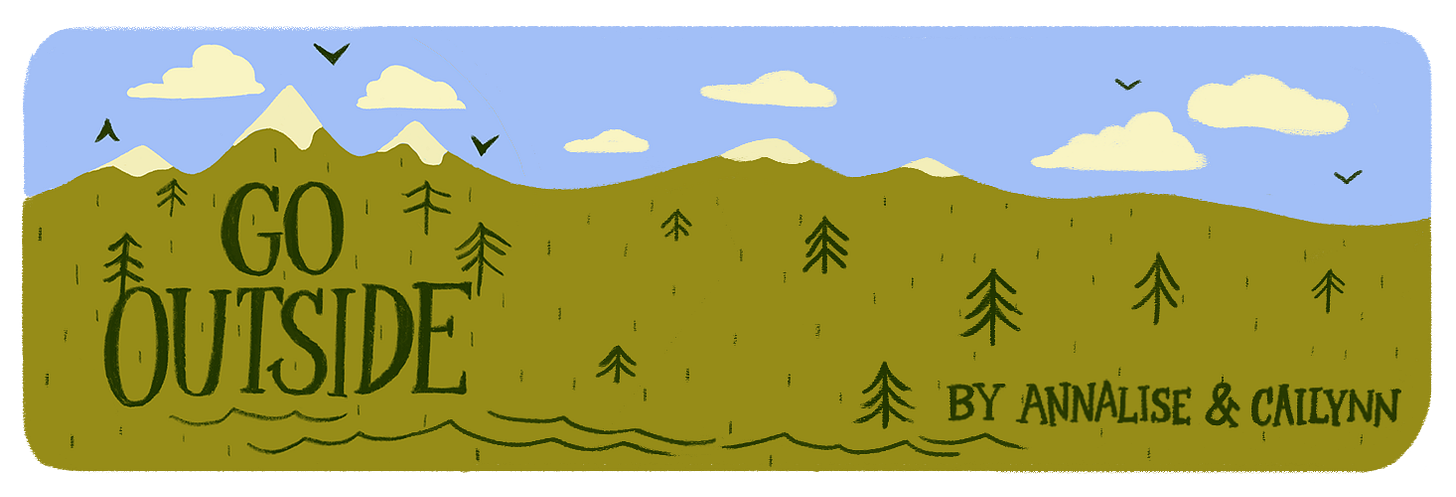Why You Should Try Birding This Winter
'Once you’re introduced to the language of nature...you start opening up your eyes to it'
Today we’re sharing a favourite post we first published in December 2020. Enjoy!
Pine Grosbeak. Photo by Chris Fisher
This week, I (Cailynn) convinced Annalise to let me take over and talk about all things winter birdwatching. As just an aspiring birder myself, I turned to an expert, Chris Fisher.
Back when Fisher was a grad student studying in the University of Alberta’s environmental & conservation sciences program, he was asked to co-author a field guide to birds in Alberta. Birds of Alberta by Chris Fisher and John Acorn has gone on to become one of the best-selling books ever published in the province, with 14 reprints over 22 years.
Fisher has met many Birds of Alberta readers over the years. He’s heard touching tales of well-loved copies of the book passed down through families, and he’s heard countless stories about why people love birdwatching.
For some people, Fisher says, there’s a competitive aspect to the hobby, while others like how birding provides an opportunity to go to new places to try and spot certain species. The aesthetic quality, such as hearing a beautiful birdsong, resonates with others.
I spoke to Fisher about winter birdwatching, including why this is a very good time for beginner birders and what they need to get started. Read on for some fun bird facts too! This interview has been edited for length and clarity.
Chris Fisher is a speaker, writer and ecologist.
Is winter a good time for birding?
It’s probably the very best time for beginners to get involved. Birds are never more accessible to people.
There's also not too many birds out there. The vast majority of birds that are found in Alberta migrate during the wintertime, so we lose upwards of 80% of the birds. And, quite frankly, birdwatching in winter just gives you an opportunity to go out and do something.
Black-capped chickadee. Photo by Chris Fisher.
What birds can people see in winter in Alberta?
For a beginner birdwatcher, one of the most important birds is a black-capped chickadee. It’s a very common bird. Anyone who's got mature trees in their yard, or who goes for a walk in any city park anywhere in Alberta, from Waterton all the way up to Wood Buffalo National Park, will have a black-capped chickadee in their company. They are one of the most friendly, approachable birds.
It was the first bird that my young boys could identify, and that allowed them to be introduced to other birds around it. From there, you can learn the other chickadees: there's boreal chickadees and there's mountain chickadees. The nice thing about birds is you establish a baseline of what's familiar and comfortable, and there's always something new that can surprise you.
Male house finch. Photo by Viv K.
In winter in Alberta, there’s also house finches, and occasionally we get downy woodpeckers coming to people's backyards. The native finches that in the summertime recoil into the shadows of the boreal forests and the mountains, they get teased out during the wintertime. They are drawn to feeders, and they’re also very chatty as well. Finches include pine grosbeaks, and two species of crossbills: red crossbill and white-winged crossbill.
Female Red Crossbill. Photo by Chris Fisher.
There’s also common redpolls. They’re tiny little Arctic shrub nesting birds that are not much bigger than chickadees. They come down from the Arctic and stop in Alberta to spend the winter feeding on birch seeds and backyard feeders, and the journeys that those tiny little balls of feathers make are pretty darn incredible.
Are there less common birds to watch for?
Some of the most special birds that we find in the winter are those that come to Alberta to spend the winter, which is a very unusual thing, like snowy owls. Owls have tremendous interest, particularly among beginner birdwatchers. They kind of look like little gnomes, and they have this mythology that’s tied to wisdom and intelligence, which is not true at all. Owls are about the dopiest, dumbest thing around. They do one thing: they kill things. But owls are kind of a winter specialty in this part of the world.
Snowy owl. Photo by Viv K.
I always like to try to track down a gyrfalcon, which is the largest falcon in the world. It’s the most powerful falcon in the world that nests up in the Arctic, and it's elusive, it's independent. The gyrfalcon to me is the epitome of winter birding in southern Alberta, and one that is a challenge to see and a great reward when you do see one.
What does a beginner birdwatcher need to get started?
You need a sense of curiosity and a willingness to open yourself up to nature, to a different voice in the world, a voice that will leave you humble and in awe.
Many people go hiking, use our urban parks, sit out in their backyards during the summer evenings. But they don't recognize the language of nature. But once you're introduced to that language — through a chickadee, or house finch or house sparrow or robin or blue jay or magpie — you start opening up your eyes to it, and then suddenly you realize that these things are all around you. And that's tremendously comforting, particularly in these challenging times when you’re reaching out for a sense of familiarity.
Bohemian waxwings. Photo by Viv K.
Are there other helpful tools?
It's most helpful to have binoculars and a field guide, whether it's a book or an app. And these are easier than ever before; there are apps that will identify a picture that you take, there are apps that will do a really good job of identifying a bird that you hear. Sibley and Audubon are probably the top two apps, and there’s one called Merlin.
Knowing the name of a bird is the first part of getting to know it: to know its habits, what it eats, where it goes in the wintertime, does it go anywhere in the wintertime, how it survives the winter. All these additional questions stem from identifying it and getting to know it, so knowing the name is very important and the apps and books are very helpful to do that.
Common Goldeneye (front) with male and female mallard ducks. Photo by Viv K.
Any places you recommended going?
Any natural areas, and the more natural the area, the better. In both Edmonton and Calgary, the Bow River or the North Saskatchewan River are excellent, and certainly the parks that feed into them, like Whitemud Creek, Mill Creek Ravine and Hawrelak Park in Edmonton. In Calgary, there’s Fish Creek Provincial Park, Carburn Park, the Weaselhead.
What else should people know about birding?
There's also a social component to birding. You're not just connecting to birds, you are connecting to, in many cases, other people in the birding community. During these pandemic times, when so many activities have been restricted, nature observation and birding in particular, has seen a major uptick. To go out in these natural areas and not find another birdwatcher is near impossible.
It's a beautiful thing to watch, because people are getting to know an integral, intrinsic part of the city that is very special to this part of the world.
Male pileated woodpecker. Photo by Viv K.
A big thanks to Chris Fisher, and Viv for the beautiful bird photos in this article.





